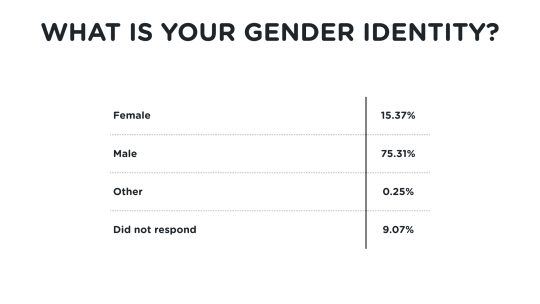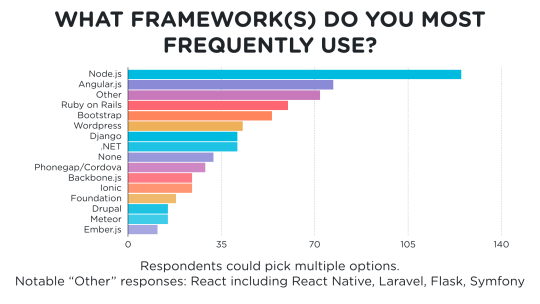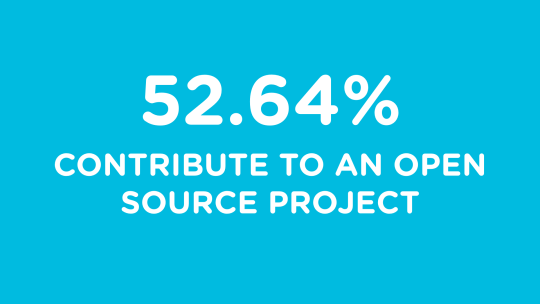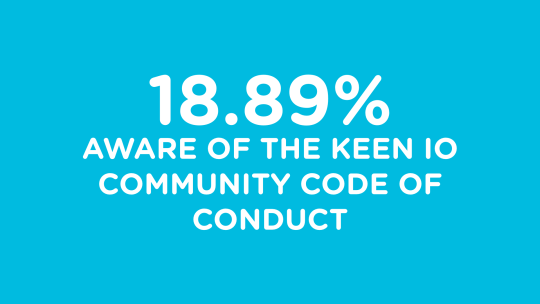Diversity and inclusion are also things we think a lot about, and we wanted to get a benchmark for some of our community demographics.
Methodology
Developer Community expert Sarah-Jane Morris was the mastermind behind our survey. She canvassed the company to learn what we wanted to know, put together a great set of questions that went through several review cycles, then shipped it out using Typeform. We distributed the survey request through our usual community channels: an email to our base of 50k signups, tweets to our 30k Twitter friends, and multiple messages to our public Community Slack. Without offering any incentive, we got over 400 responses, which we then filtered to exclude employees and trolls.
It’s probably worth noting the inherent bias in the survey: It’s filled out by people who had the time, energy, and inclination to fill out a Keen IO Developer Community survey (thank you!).
Results
Below you’ll find highlights of our findings. Some matched our instincts, but others surprised us! We share this to be helpful to other developer communities, and hope that some of this might apply to other developer-focused products as well. 😄
We’ve put the results in 5 categories:
- Demographics
- Tools and Frameworks
- Open Source Contributions
- How Welcome Do You Feel in Our Community?
- Community Events
Demographics
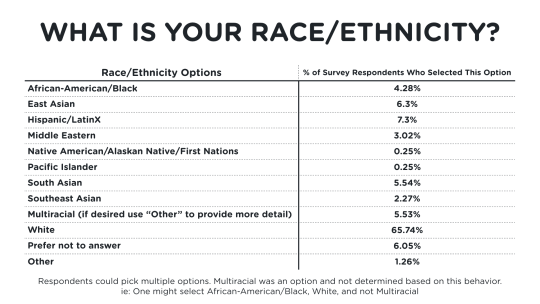
We weren’t shocked to learn that the largest demographic in our developer community are white males. One of the main motivations for running the survey was a desire to make our community more diverse and inclusive. We needed a way to benchmark where we are right now. Project Include has lots of great recommendations to help tracking these metrics.
We have noticed our local community at Keen events in San Francisco is more diverse than the larger worldwide Keen community. We will be working on ways to include more people online as well.

The age demographics of our community were a tad surprising. After all, aren’t there far more developers in their 20s than there are developers in their 30s? One idea that stands out is that community begets like community. The founding team and most of the early employees at Keen IO are in their thirties, and our community seems to have naturally spread predominantly to developers with similar demographics.

Wow! We found this statistic very interesting. It made us wonder, “How could we communicate better?”, especially as an API company that relies heavily on documentation. We don’t only mean communicate in someone’s first language, but also, “How can we communicate better in English?” Sometimes phrases in another language can be nuanced and cause confusion.
Tools and Frameworks
As you can see, Node.js beat all the other frameworks by far with AngularJS coming in second. Depending on the type of developer community, this can be really helpful for a product team to know. Is it easy to start using our API with Node.js and other popular frameworks? Is the “time to first hello world” under 5 minutes? Do we have documentation to help support users using popular frameworks?
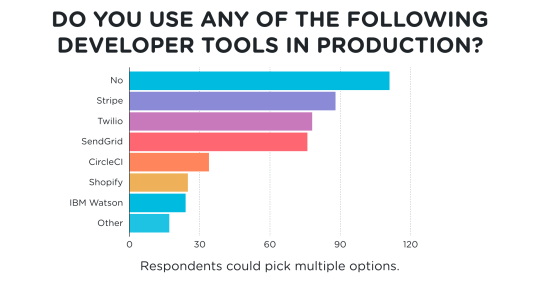
We confirmed our suspicion that Stripe, Twilio, and SendGrid have wide adoption in our developer community. This helps us reinforce our investments in integrations, tutorials, and collaborations with these companies.
Surprisingly, lots of respondents said they were using no developer tools in production. Perhaps this question was confusing? Do most developers considered APIs to be “developer tools?” This is something to think about for future surveys.
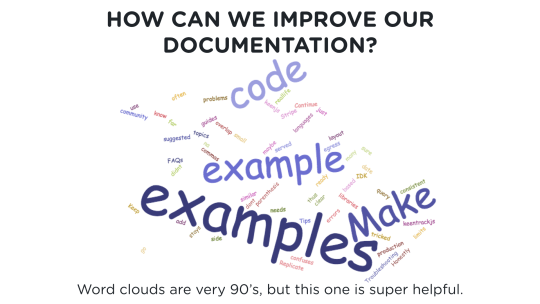
We don’t blame you if your first thought when looking at this image is, “A word cloud in Comic Sans, really?!” Even though word clouds are silly, this one was interesting and is useful to anyone at an API or developer focused company. Developers want Documentation to have more examples!
We have taken this feedback to heart and have been adding much more examples to our docs over the last couple of months, like these examples visualization examples with JSFiddles, datetime enrichment examples, and video tracking code examples.
Open Source
It’s really awesome that over half of the Keen IO community contributes to an open source project. We made sure to ask this question to not only developers, but everyone who took the survey. It’s important to remember that anyone can be an open source contributor, not just developers. A copy edit, documentation, a logo, bug reports, community management, project management, mockups, and marketing material are all forms of contribution. It’s also important to note that open source contribution is not for everyone. It takes time and other privileges to be able to do so. I gave a talk about it at OSCON London in October.

In most open source community research, the number of female contributors ranges from 1.5 to 10%. We were shocked to see out of those who identify as female, 31.15% contribute to an open source project. It would be interesting to see what this is for other communities.
Some suggestions to increase this percentage in other communities is to donate to organizations like Outreachy and Rails Girls Summer of Code who are working to increase participation from underrepresented groups in open source.
It will be interesting to see the results of The Open Source Survey, which is being designed by GitHub in partnership with the Open Source Initiative and researchers at Carnegie Mellon University. Once it is completed, it can help give us more insight into open source communities.
How Welcome Do You Feel in Our Community?
We found this number very low. About 8 months ago, we announced the Keen IO Community Code of Conduct. After its release, we promoted it heavily to bring awareness to it. We still do, but as we learned from the survey we could do more.
Currently, we:
- Have it as a requirement for any new Keen IO open source project
- Mention it in event invitations for office events and during events
- Have it as a handy Slack command in our Keen Community Slack
Some ideas to promote it more could be:
- Including it on posters around the office when we hold events
- Adding it to a welcome message to anyone joining Community Slack
- Making sure 100% of our open source project include it alongside the Contributors guide!
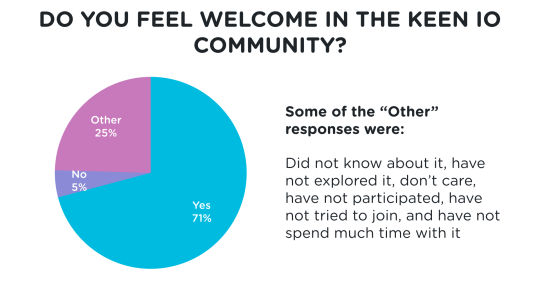
We found that most people feel welcome in the Keen IO Community. One way we have tried to achieve this is our Community Code of Conduct. We also have a wide range of events in the office on everything from mental health in tech to communication labs. By having events like this we hope to create a community which has the same values of Introspection, Continuous Learning, Personal Agency, Honesty, and Empathy as we do internally. We have found that this welcomes in a larger group of people into our community than the standard developer events.
In other places like Keen IO Community Slack, we have other community members helping each other as well as Keenies helping users. We aren’t available at all hours, but when we are we try to be as welcoming as possible. There are other small ways to be welcoming like sending out stickers, shirts, or cute little animals.
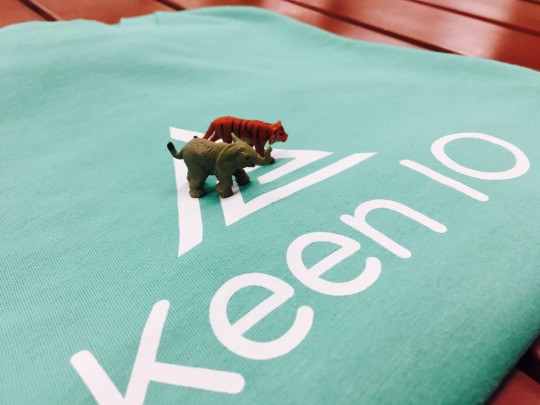 Right now, when you sign up for Keen IO, you get an email that invites you to pair with a developer at Keen IO. Our “Invitation to Pair” email also encourages users to ask questions and join other places like Community Slack for more help. You have to find what works for you to create a welcoming community.
Right now, when you sign up for Keen IO, you get an email that invites you to pair with a developer at Keen IO. Our “Invitation to Pair” email also encourages users to ask questions and join other places like Community Slack for more help. You have to find what works for you to create a welcoming community.
Respondents also suggested that we could strengthen the community by communicating more about what other developers are doing with Keen.
Community Events
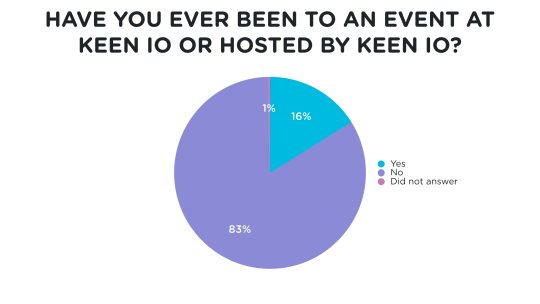
We found that only about 16% of people have been to a Keen event. Also, 16.63% of respondents live in the San Francisco/Bay Area, so we might be doing a great job of bringing in locals for the events in the Keen IO office. But what about the other 83%? In the past, Keen has done events all over the world. If you have ever done national or international events that involve travel, you know how time consuming and costly they can be. Live streaming events can possibly bring in a larger audience to be a part of your events when attendees are limited by location.
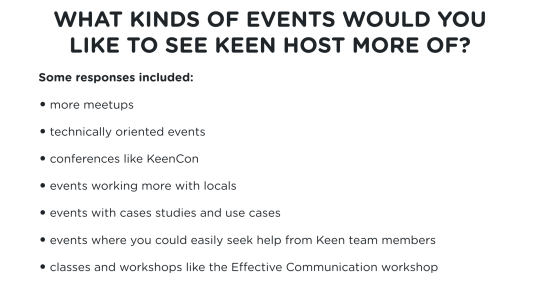
We thought the list of kinds of events respondents would like to see more of would also be helpful to others too. Some of the ideas are outside the normal realm of events. For example: Events working more with locals.. This could manifest itself in a few different ways. You could do technical events with organizations like Hack the Hood or you could choose to do an event where attendees volunteer their time to a local non-profit organization.
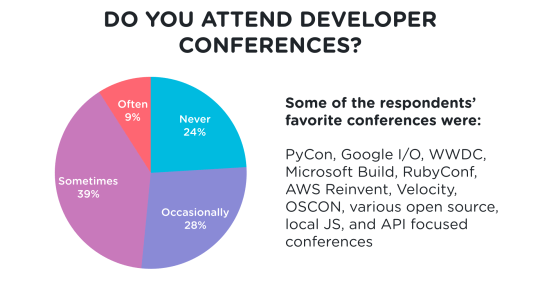
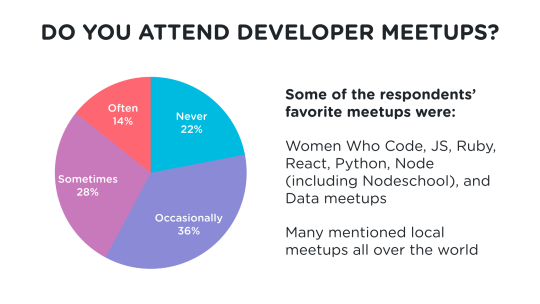
We found about a quarter of respondents say they never go to developer conferences or meetups. If we were only focused on conferences and meetups, we would never get to interact with these developers.
–
Thanks to everyone who generously took time out of their day to complete our survey. You can check out the full length of our survey results by downloading them here.
